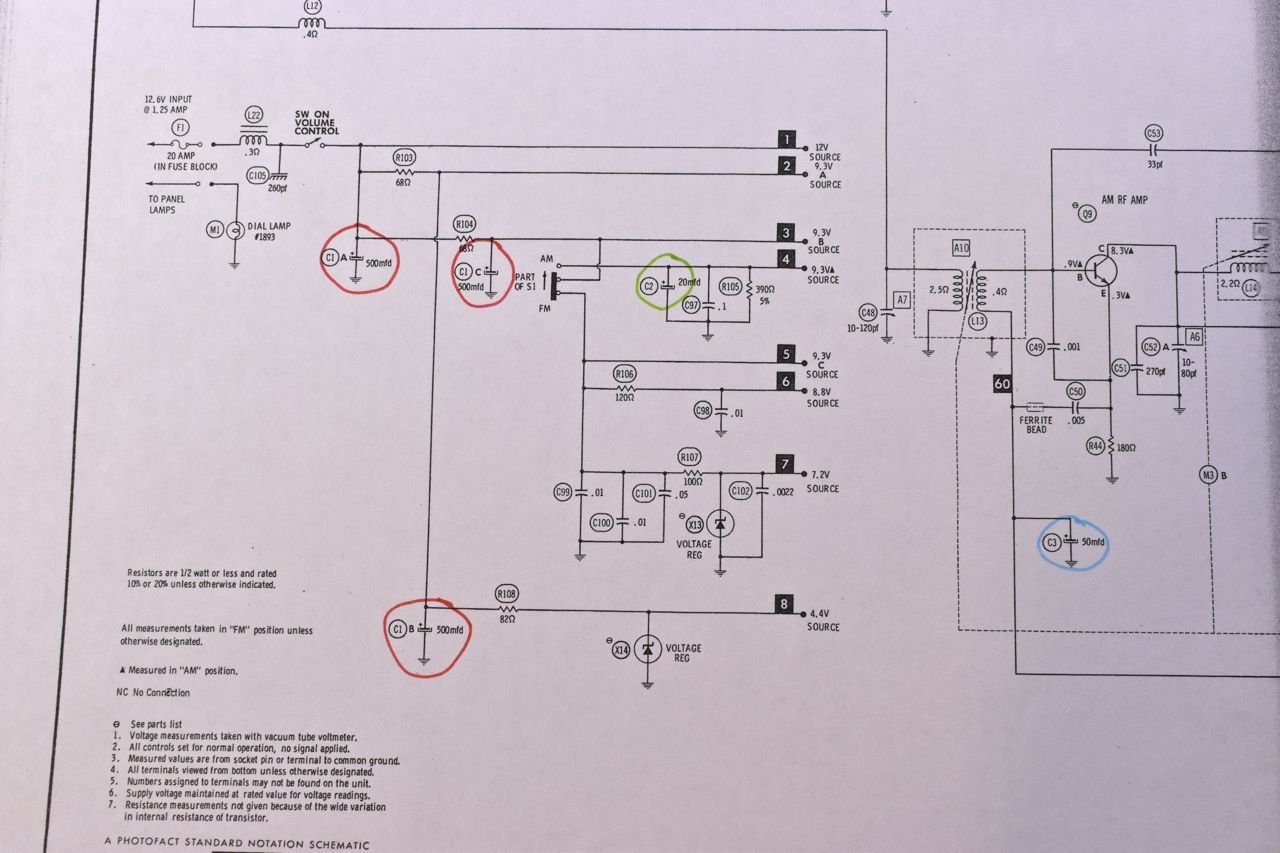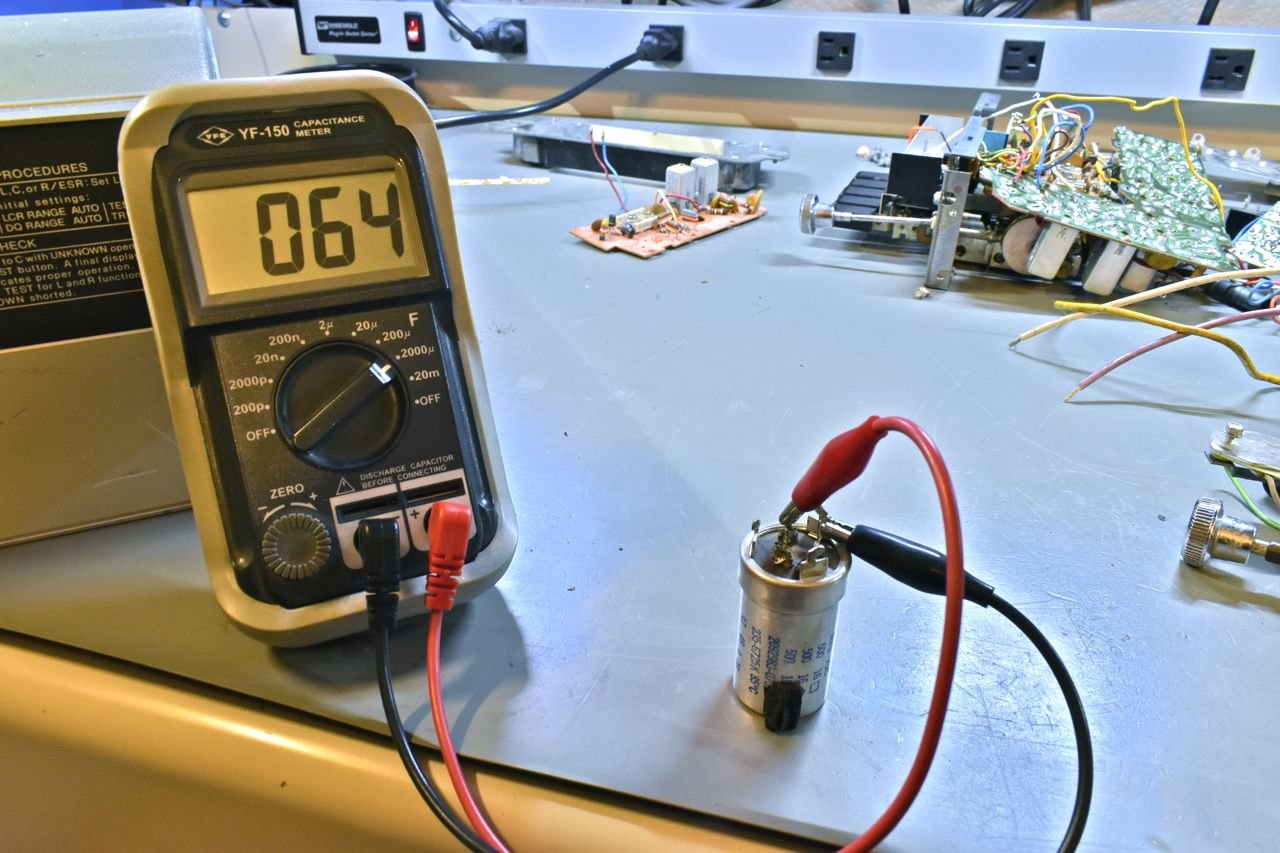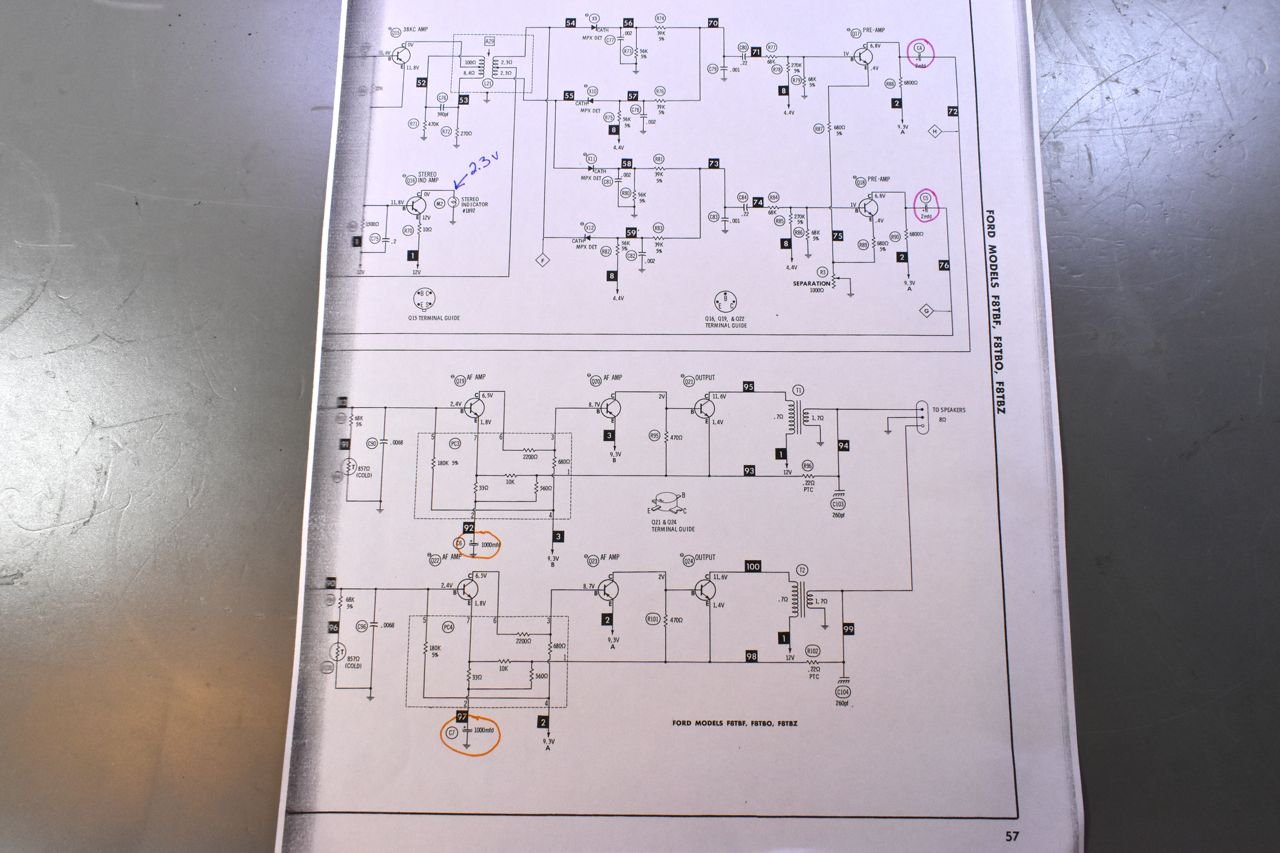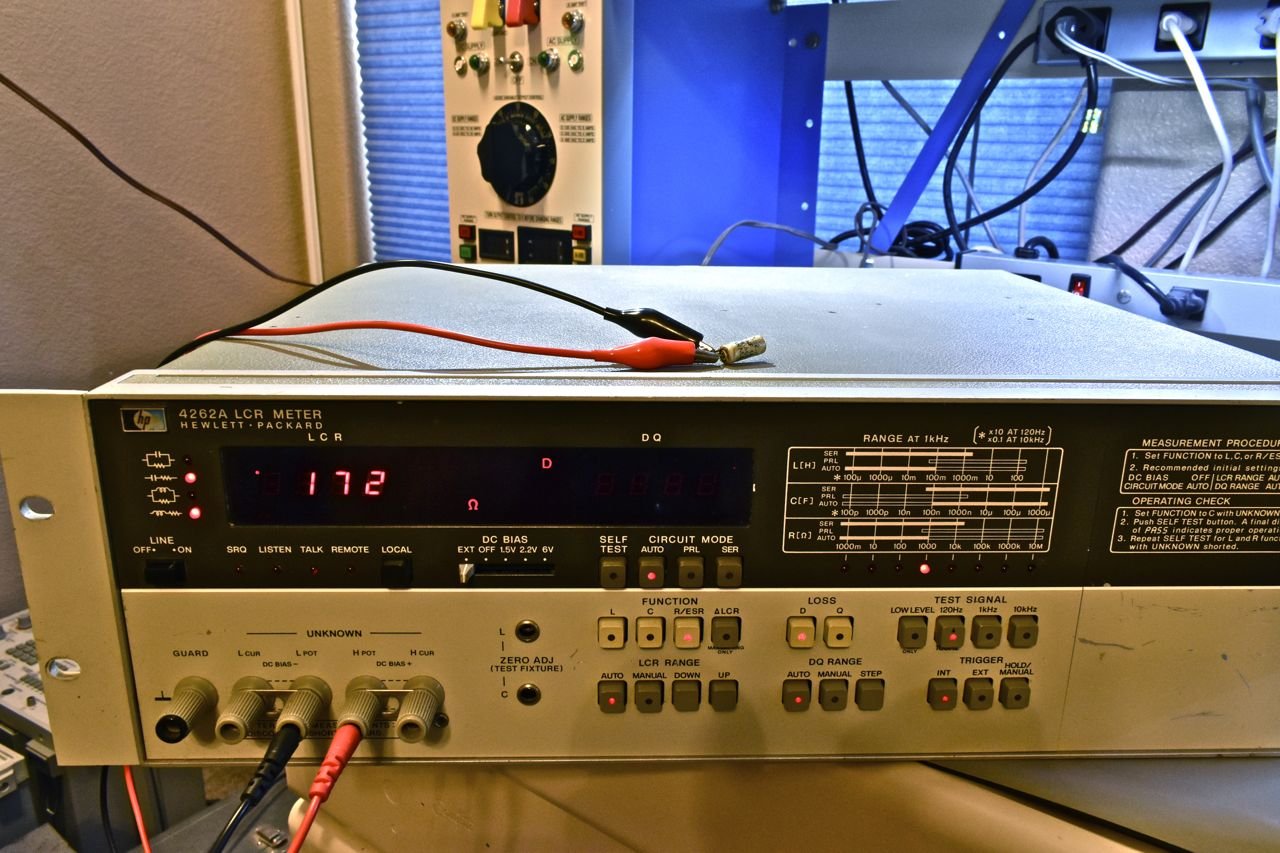1968 Ford AM-FM Stereo Overhaul : 08 Repair - Testing Capacitors
2023, November 14
1 - 2 - 3 - 4 - 5 - 6 - 7 - 8 - 9 - 10 - 11 - 12 - 13 - 14 - 15 - 16 - 17 - 18Radio Overhaul - Repair page 5
Next I'll examine main power supply filter capacitor. It's the big can that has three capacitors in it. They are circled in red.


Here's one cap in the can. Now this is the first time the handheld has really indicated trouble. All three capacitors in this can are rated at 500 uF.
Here's the other two sections:

not good.

and also not good.
Since we know that an old failing electrolytic will read much higher on a handheld, this thing must be nearly expired.

Yuppers, that's pretty darn low at only 8.8uF out of 500 uF. That's only about 1.8% of capacity.

This is showing an ESR of 143 ohms. For this kind of application I would want to see a capacitor with a 1/2 ohm or less ESR.
I won't bore you testing the other two sections as they are all about the same condition. I'm trying to impart a feel of what to expect.
With this input power supply filter being nearly dead, you would hear every electrical noise in your car over the speakers on AM or FM. You'd hear the ignition, turn signals, blower motor, etc as a symptom and perhaps even the alternator whine.
There's only 4 more electrolytic's to check.

The ones circled in pink must have some life left in them as they couple the audio on the L & R amplifiers, if these were dead the radio would produce no sound, maybe some hiss from the output transistors cranked all the way up, but that's about it.
Here's how they checked out.

The handheld is measuring 3uF and the capacitor is rated at 2uF. On the surface that seems pretty good, albeit high.

The bridge isn't that far off either.
Sooooooo are these good or...........

No. Not even close. 172 ohms is bad, when these should be around 1-2 ohms ESR for this size and voltage rating of an electrolytic capacitor.
But now let me throw you a further curve ball. Up to this point I've been checking ESR and capacitance. I've mentioned that the LCR bridge uses frequency to measure capacitance, but I never mentioned what that frequency is.
Till now.
Click here to continue to part 9